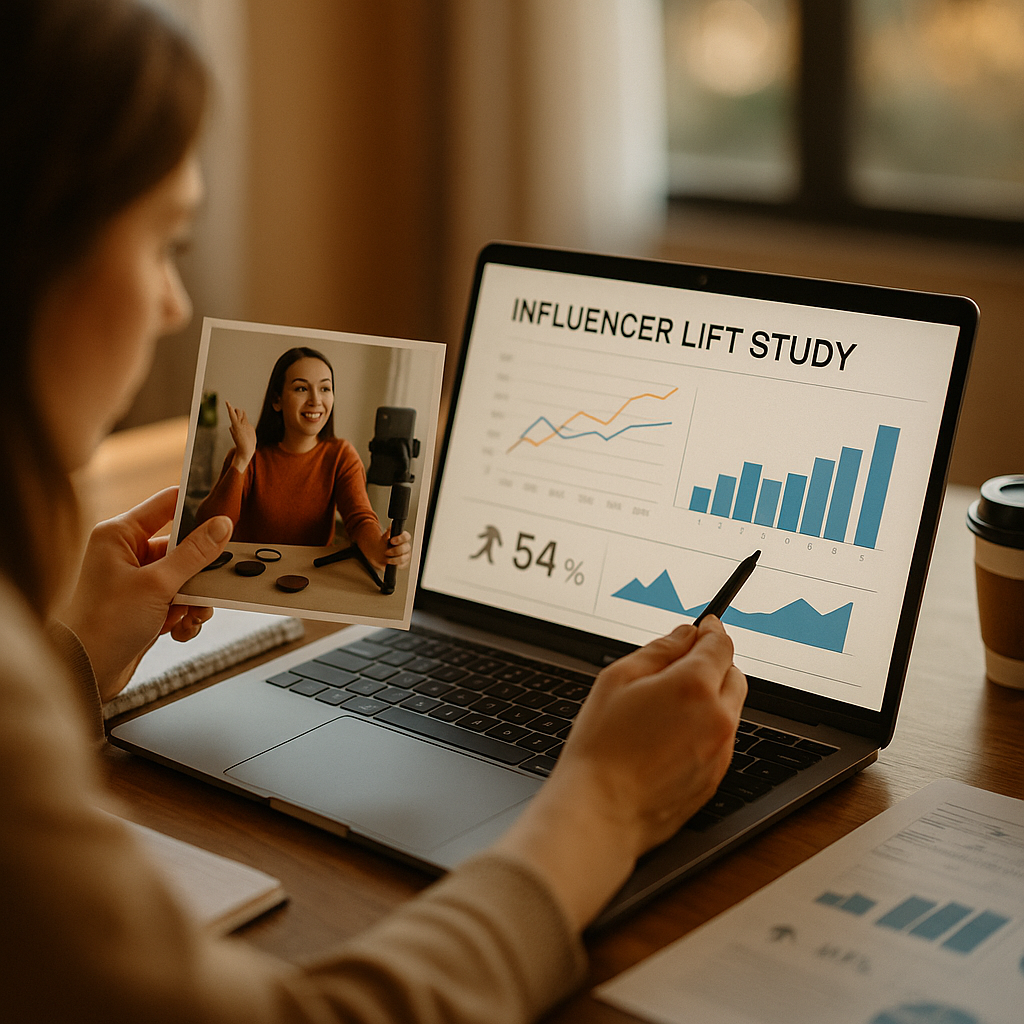Marketers are experiencing a shift in measurement in 2025, with influencer-driven lift studies shaping the future of attribution. As traditional cookie-based tracking loses effectiveness, brands must accurately quantify influencer marketing’s role in conversion outcomes. Discover why this evolution matters—and how adapting today could transform your campaign impact tomorrow.
The Evolution of Attribution: Influencer Impact in Focus
Attribution models have undergone significant changes. Traditional last-click models struggle as privacy rules and tracking limitations proliferate. In this context, influencer collaborations are emerging as powerful top- and mid-funnel drivers, yet their quantitative impact often remains elusive. As brands allocate more budget to influencer partnerships, the need for precise measurement becomes vital. Influencer-driven lift studies offer a promising solution, quantifying the incremental impact influencers deliver and helping marketers defend investments with hard data. By isolating uplift, these studies answer crucial ROI questions and ensure influencer strategies remain data-backed in 2025’s competitive environment.
Why Influencer-Driven Lift Studies Are Gaining Traction
In today’s digital marketing ecosystem, reliable measurement can make or break campaigns. Influencer-driven lift studies are gaining popularity because they focus on real behavioral change, not vanity metrics or impression counts. Marketers can clearly identify the difference an influencer campaign creates by comparing exposed and control groups across brand awareness, consideration, intent, and sales. With social platforms embracing more robust analytics tools, brands now have access to granular reporting, transparent methodology, and even A/B split-group controls for influencer activations. This level of rigor is rapidly becoming the standard, helping CMOs and performance leads allocate investments more confidently.
Methodologies Powering Next-Generation Attribution Models
Several methodologies underpin effective influencer-driven lift studies:
- Matched Control Groups: Brands identify audience segments unexposed to influencer content as a ‘control group’ to benchmark against the ‘exposed’ cohort, isolating the influencer effect from other variables.
- Incrementality Testing: This involves measuring actual conversion uplift by assessing outcome differences between groups and filtering out existing brand engagement.
- Cross-Channel Attribution: Attribution doesn’t occur in a vacuum; tracking customer journeys across paid, owned, and earned media ensures influencer impact is measurable alongside other tactics.
- Platform-Specific Insights: Platforms such as TikTok, Instagram, and YouTube now provide off-the-shelf lift study tools, helping standardize and scale measurement efforts across both micro- and macro-influencers.
Marketers blending these approaches achieve holistic visibility—from brand awareness lift to final conversions and even lifetime value improvements.
Real-World Benefits for Brand and Agency Teams
The actionable value of influencer-driven lift studies goes far beyond statistical significance. Brands leveraging these studies in 2025 are discovering that:
- Budget Optimization: Agencies can justify or reallocate spend based on clear evidence of impact rather than assumptions or outdated attribution models.
- Creative Effectiveness: Insights show not just if, but how and why specific influencer messages drive outcomes, informing future briefs and partnerships.
- Long-Term Planning: Consistent use of lift studies supports annual planning, benchmarking, and incremental uplift quantification—de-risking influencer investments at the board level.
Brands like adidas and L’Oréal have publicly discussed their adoption of these methods, reporting more accurate forecasting and stronger cross-team partnerships as a direct result. With rigorous measurement, influencer programs can evolve from tactical experiments to cornerstone strategies in the paid media mix.
Challenges and Solutions in Executing Influencer-Driven Lift Studies
Despite their promise, influencer-driven attribution and lift studies present several challenges:
- Sample Size Constraints: Smaller influencers or niche campaigns may struggle with statistically significant control groups. Solution: Pool similar creators or increase campaign duration for more robust data.
- Data Privacy: GDPR and TikTok’s data governance updates in 2025 emphasize anonymized, aggregated reporting—working closely with platforms ensures compliance.
- Attribution Windows: Selecting attribution windows that reflect realistic buying cycles is critical to avoid misattribution—industry best practices recommend customizing these windows per campaign.
- Holistic Measurement Alignment: Ensure influencer-driven lift studies are integrated with other MMM (marketing mix modeling) or multi-touch attribution workstreams to avoid siloed analysis.
Agencies and brands that invest early in trustworthy partners, robust tech stacks, and internal education will overcome these hurdles, positioning themselves for outsized returns as the industry matures.
What the Future Holds: Continuous Innovation in Influencer Attribution
The evolution of influencer attribution is only gathering momentum in 2025. As AI-driven analytics mature, real-time lift studies will become commonplace, even for smaller creators. Innovations in decentralized first-party data sharing and advanced media mix modeling will empower marketers to connect influencer exposure with downstream sales in direct-to-consumer and omnichannel contexts. Furthermore, as regulations and consumer privacy expectations continue to shift, influencer-driven lift studies—featuring anonymized and opt-in data—will remain compliant while maximizing ROI clarity for brands. The brands who adopt this advanced measurement standard now will outpace competitors and elevate the strategic value of every influencer partnership.
As influencer-driven lift studies become the future of attribution, marketers must prioritize accurate measurement to unlock their full campaign potential. Embracing these industry standards in 2025 gives brands a competitive edge by transforming influencers from tactical tools into strategic growth drivers.
FAQs: Influencer-Driven Lift Studies and Attribution
-
What is an influencer-driven lift study?
An influencer-driven lift study is a research method that isolates and measures the incremental impact of influencer content on target audiences by comparing results between exposed (test) and unexposed (control) groups.
-
How is this approach different from traditional influencer analytics?
Unlike vanity metrics or last-click attribution, lift studies focus on actual behavioral outcomes—like purchase, consideration, or brand recall—rather than simple likes or reach.
-
Can small brands or micro-influencers benefit from lift studies?
Yes. Platforms and agencies have adapted methodologies for smaller sample sizes by pooling data or extending campaign timelines to ensure meaningful, statistically valid results.
-
Are influencer-driven lift studies compliant with privacy laws?
Lift studies in 2025 leverage aggregated, anonymized data and comply with global privacy regulations. Working with trusted influencer platforms ensures privacy-by-design measurement processes.
-
How do I get started with influencer-driven lift studies?
Start by partnering with measurement-capable influencer platforms or specialized analytics vendors, and educate internal stakeholders on the advantages and process of using lift studies for campaign evaluation.
